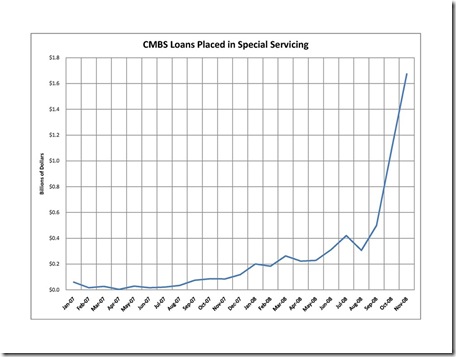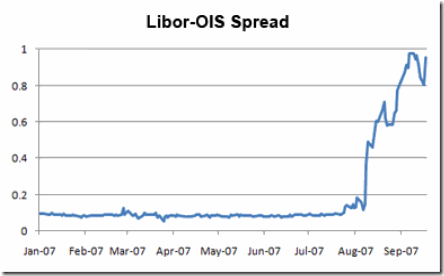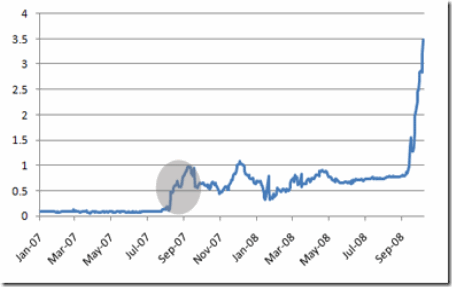Mr. Mortgage’s post Low Interest Rates To Spur New Waves of Defaults is being widely cited (see Infectious Greed, The Big Picture, Option ARMageddon, and Naked Capitalism). Possibly this story is attractive because it’s counterintuitive, and counterintuitive is interesting. In this case, though, I think it’s wrong.
The claim is counterintuitive because lower interest rates lower the risk of default. Lowering the amount of interest a homeowner pays reduces their debt burden, and that lowers the risk of a future default. There’s nothing in the post to indicate there’s any disagreement on that point.
The argument in the post has three steps:
1) The news of lower interest rates is stimulating borrowers to apply for lower rate loans
2) The applicants are being turned down because their homes lack equity and/or the borrowers credit scores have declined, and
3) The realization they lack adequate equity and credit scores will spur the applicants to default on their existing loans.
The basic argument is that borrowers are ignorant of their situation, and once it’s revealed to them a significant number will default. My first objection is admittedly a philosophical one – I am highly suspicious of arguments which depend on people’s ignorance, and especially so when every homeowner I’ve met in the last year is acutely aware of what’s going on. I’m the first to admit there are whole sets of cognitive biases which predispose people to overvalue what they own (endowment effect, post-purchase rationalization), continue to do what they've done in the past (status quo bias, sunk cost effects, loss aversion), and expect a positive outcome to their choices (optimism bias, and valence effects). Given these biases, borrowers may wrongly expect their homes would qualify for refinancing, and getting turned down will be disappointing. But, I don’t think there are very many applicants who would be surprised.
My second objection is there is no evidence to support the claim is occurring – it’s a plausible narrative, but without any support. Here’s the only portion of the post which attempts to quantify the problem:
From early reports since rates fell sharply in early December, 80% of the loan applications are not getting out of the starting gate easily. Loan officers are all saying the same thing — that appraisals are not coming at value due because ‘all of the foreclosures and REO sales have taken the value down’. In the majority of these cases, this kills the loan.
This is obviously anecdotal (I don’t think “out of the starting gate easily” is a metric anybody tracks). We don’t know the normal fallout rate either, but I’m sure these days it’s substantial. I’m sure lower rates prompted some applicants who can’t qualify under today’s underwriting parameters to come out of the woordwork, but I’m equally sure lower rates have resulted in approvals for some applicants who wouldn’t have qualified at higher rates. Without data there is no way to know the net effect, and to forecast "a “wave” of defaults seems a stretch.
My biggest objection to the claim is that it presumes new knowledge they lack equity will cause borrowers to default. Borrowers default because they can’t make their payments (usually as a result of income curtailment). There is no credible evidence lack of equity in and of itself results in defaults.
The argument also ignores the fact that borrowers who lack equity may consider continuing to pay their best option. If they default, they will still need housing, and with no equity from their current home that means the down payment will have to come out of savings. How many homeowners can do that? Alternatively, they could rent, but how many homeowners who can afford their current payments would make that choice?
The only group of borrowers I see who might default as a result of lower rates are those who have substantial liquid assets and can afford a new down payment but hadn’t previously thought about walking away (small group), or who are willing to join the renter class despite the fact they can make their current payments (also a small group).
I don’t see a wave of defaults developing out of lower interest rates.





























